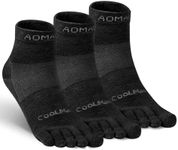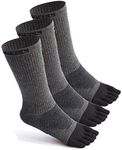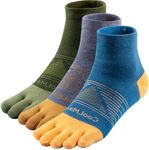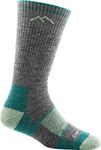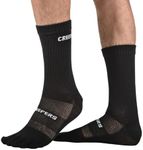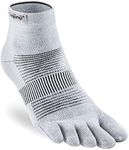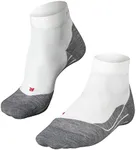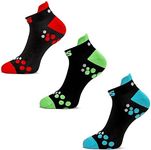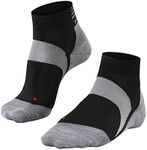Buying Guide for the Best Toe Socks For Hiking
When it comes to picking the right toe socks for hiking, it's important to consider several key specifications to ensure comfort, durability, and performance. Toe socks are designed to reduce friction between your toes, which can help prevent blisters and improve overall foot health during long hikes. By understanding the key features and how they align with your hiking needs, you can make an informed decision and find the best fit for you.MaterialThe material of toe socks is crucial as it affects comfort, breathability, and moisture-wicking properties. Common materials include merino wool, synthetic blends, and cotton. Merino wool is excellent for temperature regulation and moisture management, making it ideal for various weather conditions. Synthetic blends, such as polyester and nylon, offer durability and quick-drying properties, which are great for intense hikes. Cotton, while comfortable, tends to retain moisture and may not be the best choice for long hikes. Choose a material based on the climate you'll be hiking in and your personal comfort preferences.
ThicknessThe thickness of toe socks can impact both comfort and performance. Thin toe socks are lightweight and provide a snug fit, making them suitable for warm weather and shorter hikes. Medium-thickness socks offer a balance of cushioning and breathability, ideal for moderate hikes and varying temperatures. Thick toe socks provide extra cushioning and warmth, which is beneficial for cold weather and long, strenuous hikes. Consider the type of terrain and weather conditions you'll be facing to determine the appropriate thickness for your needs.
Fit and SizeA proper fit is essential for toe socks to function effectively. Socks that are too tight can restrict circulation, while those that are too loose can cause bunching and blisters. Most toe socks come in a range of sizes, so refer to the manufacturer's sizing chart to find the best fit for your foot size. Additionally, consider the length of the socks – ankle, crew, or knee-high – based on your hiking boots and personal preference. A good fit ensures comfort and prevents issues during your hike.
Seam ConstructionSeam construction in toe socks can affect comfort and durability. Look for socks with seamless or flat-seam construction to minimize friction and prevent blisters. High-quality toe socks often feature reinforced seams in high-wear areas, such as the toes and heels, to enhance durability. Pay attention to the seam placement and construction to ensure a comfortable hiking experience.
Moisture-Wicking and BreathabilityMoisture-wicking and breathability are important features in toe socks to keep your feet dry and comfortable. Socks with good moisture-wicking properties draw sweat away from your skin, reducing the risk of blisters and fungal infections. Breathable materials allow air to circulate, helping to regulate temperature and prevent overheating. Look for socks specifically designed with these features, especially if you tend to sweat a lot or hike in hot and humid conditions.
Odor ControlOdor control is a valuable feature in toe socks, especially for multi-day hikes. Some materials, like merino wool, naturally resist odors, while others may be treated with antimicrobial agents to prevent the growth of odor-causing bacteria. If you are concerned about foot odor, consider socks with built-in odor control to keep your feet fresh throughout your hike.
